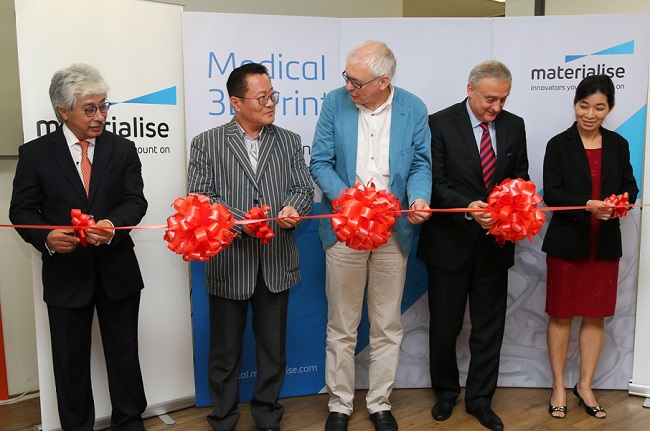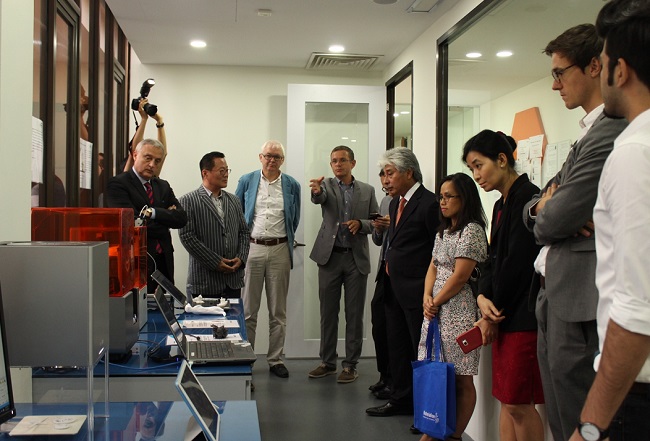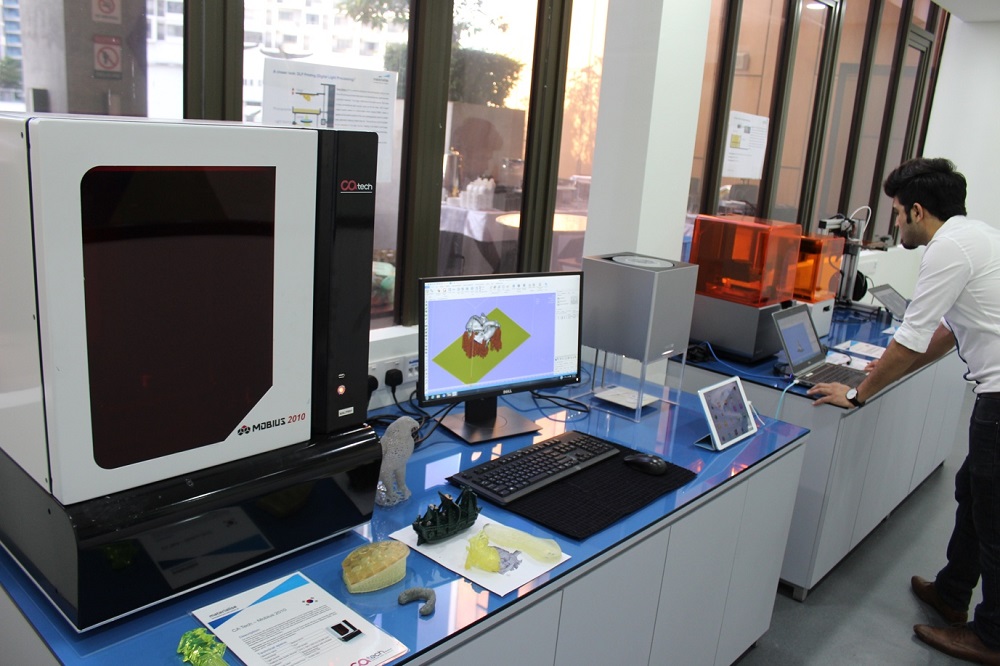Materialise launches 3D printing R&D centre in Malaysia
By Lum Ka Kay July 21, 2016
- Focus on digital light processing technology for medical 3D printing
- Malaysia has 3D talent and the right environment, and is ready!

BELGIUM-headquartered 3D printing solutions provider Materialise NV has launched a 3D printing Centre of Excellence (CoE) in Malaysia that will do research and development (R&D) on digital light processing (DLP) technology.
Materialise Malaysia Sdn Bhd executive vice president and chief executive officer Wim Michiels said the centre would provide the missing link between the company’s existing engineering and software development in Malaysia, as well as its actual knowledge of the 3D printing process.
“This will benefit our customers and partners enormously as it brings us close together in knowledge, technology, and even proximity.
“It will also benefit Malaysia, as it will build local knowledge and develop applications well suited for the region,” he said at the launch of the centre in Kuala Lumpur on July 20.
Michiels said the initiative will see Materialise’s local research teams developing new 3D printing applications, preparing 3D printing applications for the market, and becoming a knowledge centre within the Belgian company’s overall operations.
“The teams will also investigate 3D printing anatomical models and other medical devices with DLP technology, thereby providing valuable input to further enhance the functionality of our 3D printing software suites for the benefit of end-users working with DLP 3D printers.
“Many 3D printer OEMs (original equipment manufacturers), which already count on Materialise as a trusted software partner, will also play a role in this CoE through our collaborations,” he added.
Meanwhile, Materialise NV founder and chief executive officer Fried Vancraen said software is the backbone of the 3D printing industry.
“We connect the applications and the printers because I believe the printers are overrated.
“In fact, what the printers do is the packaging of concepts that have been worked upon by engineers, then translated into software which is the control command of the printer.
“While the printer is important, with most projects, you see that at least two-thirds of research resources go to software and engineering,” he added.
Malaysia's got 3D talent!

Materialise was founded in 1990 and the Malaysian branch was set up back in 2000. Materialise Malaysia received its Multimedia Super Corridor (MSC) status in 2012.
According to Michiels (middle, gesturing at the 3D printers), Malaysia has many good engineering talents.
“We have about 140 people in Material Malaysia’s team and 80% of them are Malaysians. The engineering talents in Malaysia are really good.
“The challenge lies with high-level software developing talents,” he told Digital News Asia (DNA) on the sidelines of the launch.
The CoE completes the three core competences in Materialise: Software development, engineering, and 3D printing, according to Michiels.
“Software and application developers can’t see how their idea are materialised, but with 3D printing inhouse, it will make things much more visible to them,” he said.
Most projects that will be conducted in the Malaysian CoE are medical-oriented, but “there will be more,” he added, without giving specifics.
Medical 3D printing

Speaking on the medical applications of DLP technology, Michiels said he hopes that Materialise can discover more validated, reliable and responsible products that the company can produce through DLP technology.
“I’m talking mostly about anatomical models here. It’s very easy to produce something, but it’s important that we can guarantee the quality of those products, that they’re medically reliable.
“That’s something we hope to achieve as soon as possible.
“We are also continuously seeking ways to make more cost-effective products and at the same time maintain their quality,” he said.
When asked about the adoption rate of 3D printing in Malaysia, Michiels said, “I think 3D printing is already here. It’s a matter of spreading it. Malaysia has all the competencies and environment to bring it local.
“It’s really about finding the right match of application, market, and product to bring 3D printing to the market in a viable and sustainable way.
“When I speak about market maturity, it is more about matching tech and market rather than adoption, talents or competencies, as these are all here already,” he added.
Related Stories:
Creating a STEM tide in Singapore with 3D printing
Changing the world: Pirate 3DP’s vision is to end ‘need’
Not quite Star Trek, but Stratasys brings 3D printing tech to Malaysia
Autodesk moves to standardise 3D printing with open source Spark
For more technology news and the latest updates, follow us on Twitter, LinkedIn or Like us on Facebook.


